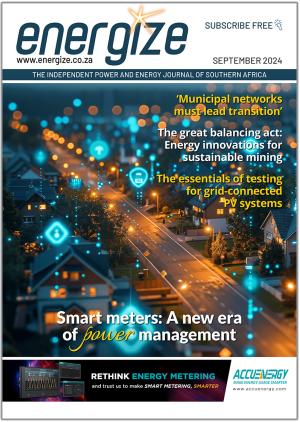Clean energy deployment continues to advance in all future scenarios, including strong solar, wind, electric vehicle (EV) and battery storage growth but greater and more diversified investment is needed to reach energy and climate goals.
This is according to the International Energy Agency (IEA) Global Critical Minerals Outlook 2024 released last month.
Looking at annual capacity additions for selected clean energy technologies from 2021 to 2023, the report notes:
-
Solar photovoltaic capacity grew by 35% in 2022 and 85% in 2023, reaching more than 400 GW. China added 45 GW of solar power in the first quarter of 2024 with strong solar deployment in other key markets.
-
Wind energy technology declined by 20% in 2022 but increased by 60% in 2023.
-
EV sales grew 60% in 2022 and 35% in 2023. In the first quarter of 2024, sales of EVs grew 25% compared with the first quarter of 2023.
-
Battery storage capacity increased by 90% in 2022 and 130% in 2023 to more than 90 GWh. Early signs in 2024 indicate continued robust growth.
Speaking during a webinar on May 31, sharing details of the report, Tae-Yoon Kim, IEA’s Senior Energy Analyst, said diversification of supply sources demonstrated limited progress in the past and the same is expected going forward. “Geographical concentration of mining operations is set to rise further or remain high for refined materials. Between now and 2030, 70% and 75% of supply growth for refined lithium, nickel and cobalt will come from today’s top three producers: China, Indonesia and Malaysia. More than 90% of battery-grade graphite supply comes from China, which is also the world’s largest supplier and consumer of copper.”
Who will benefit?
According to the report, increasing demand for minerals will result in substantial growth in a country’s market value.
In the mining sector, the largest market values until 2030 are expected to be in Africa, Latin America and Indonesia. This growth will be driven by expansions in copper and lithium mining in Latin America and lithium, copper and cobalt mining in Africa as well as nickel mining in Indonesia.
China is expected to retain its strong position in the refining and processing sectors with a projected two-fold increase by 2030. By that time, China will hold 50% of the market value for refining. These increases are attributed to expansions in copper, lithium, graphite and rare earth elements refining. Additionally, Indonesia is expected to see significant growth in nickel refining.
“Secure and sustainable access to critical minerals is essential for smooth and affordable clean energy transitions. The world’s appetite for solar panels, electric cars and batteries is growing fast but we cannot satisfy it without reliable and expanding supplies of critical minerals, ” says IEA Executive Director Fatih Birol.
What's new?
A new feature in the report is a first-of-its-kind, mineral-specific risk assessment to understand potential risk areas that could hamper progress towards energy transitions. The framework has four main categories:
-
Supply risks
-
Geopolitical risks
-
Barriers to responding to supply disruptions
-
Exposure to environmental (including climate), social and governance risks
Lithium and copper are most vulnerable to supply and volume risks while graphite, cobalt, rare earth elements and nickel face more substantial geopolitical risks. Lithium and graphite are at the highest risk. For graphite, in particular, today’s project pipeline indicates that available supply outside the dominant player meets only 10% of the requirements in 2030, making diversification goals extremely challenging to achieve. Most minerals are exposed to high environmental risks.















